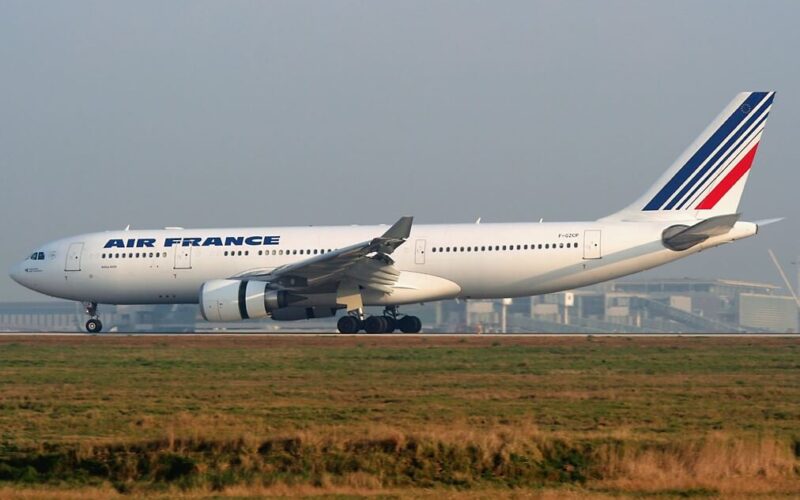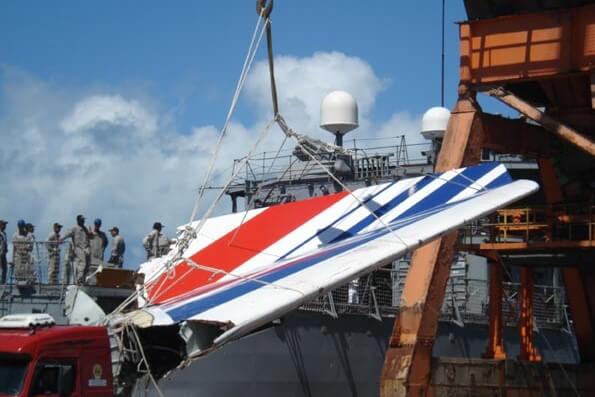On this day, 13 years ago, during the early morning of June 1, 2009, Air France Flight 447 was cruising at flight level 350 (approximately 35,000ft) over the Atlantic Ocean, having departed from Rio de Janeiro, Brazil, bound for Paris, France.
The Airbus A330 aircraft was carrying 216 passengers and 12 crew, including Captain Marc Dubois, First Officer Pierre-Cédric Bonin, and relief pilot First Officer David Robert.
At 02:02hrs (UTC), Captain Dubois left the flight deck and headed to the crew rest area, leaving First Officer Bonin in the right-hand seat as pilot flying (PF) and First Officer Robert in the left-hand seat as pilot not flying (PNF).
While transiting the Intertropical Convergence Zone, Flight 447 flew through powerful bands of convective thunderstorms within Cumulonimbus clouds. During this time, the aircraft encountered a period of turbulence followed by icing conditions and hail.
At 02:10hrs, the autopilot disengaged, and First Officer Bonin took manual control of the aircraft. First Officer Robert, as PNF, began reading the system failure messages before calling Captain Dubois back to the flight deck.
At 02:14:28, less than five minutes after the autopilot disengaged and with no mayday transmission, Air France Flight 447 crashed into the ocean at a speed of 152 knots, descending at a rate of 10,912 feet per minute.
Search and Rescue Operation
By the afternoon of June 1, it was announced that Flight 447 was missing, with little hope for survivors. In the days that followed, search and rescue teams led by Brazil, the United States and France scoured the ocean for signs of any wreckage.
On June 7, rescue teams recovered the vertical stabilizer from the Air France Airbus A330. The images sent shock waves across the globe.
There was still no certainty regarding the location of Air France 447 and, although 50 bodies had been recovered, along with 640 items of floating debris related to the aircraft, the families of the victims, investigators and the world would have to wait almost two years before the wreckage was found.
Roberto Maltchik, CC BY 3.0 br
Discovery and Subsequent Investigation
The final resting place of Flight 447 was discovered on April 3, 2011, at a depth of 3,980 meters. By May 2, both black boxes had been found, and were sent for analysis by the BEA, France’s air safety agency.
The final report, published in 2012, concluded that the aircraft entered a stall due to pilot input from which it never recovered.
The BEA highlighted a sequence of events that contributed to the accident.
“Temporary inconsistency between the measured airspeeds, likely following the obstruction of the Pitot probes by ice crystals that led in particular to autopilot disconnection and a reconfiguration to alternate law”;
As the aircraft encountered icing conditions, the aircraft’s three Pitot tubes, which provide data, including airspeed to the flight deck instruments, became temporarily blocked, likely due to ice crystal formation. At this point, the autopilot disconnected.
The blockage of a Pitot tube due to ice is not considered a catastrophic event, and in the case of Flight 447 lasted less than a minute.
“Inappropriate control inputs that destabilized the flight path”;
Once the autopilot disconnected, rather than maintaining straight and level flight, First Officer Bonin made excessive control inputs, pulling back on the side-stick, raising the nose and exceeding the critical angle of attack, triggering the stall warning.
During this time, vertical speed peaked at 7,000 feet per minute and the aircraft climbed up to 38,000ft. It was noted that the crew lacked experience on the characteristics of high-altitude manual flying.
“The lack of any link by the crew between the loss of indicated speeds called out and the appropriate procedure”;
Despite identifying and calling out the loss of airspeed indications, the crew did not complete the “Unreliable Indicated Airspeed” procedure. Consequently, the Flight Directors (FD) were not disconnected.
The FDs appear on the Primary Flight Display (PFD) and show the attitude required to achieve a desired flight path. It is not known whether Bonin followed the Flight Directors, however, their presence in this case may have influenced the incorrect pitch up input.
“The late identification by the PNF of the deviation from the flight path and the insufficient correction applied by the PF”;
During a stall, the critical angle of attack of the wing is exceeded leading to a loss of lift. The stall recovery is to lower the nose, reducing the angle of attack and restoring lift. Bonin’s reaction as PF was the opposite, he kept pitching the nose up, deepening the stall.
Just before the Captain returned to the flight deck, First Officer Robert said, “controls to the left” and took control without any formal callout. Almost immediately, Bonin, again without any callout, took back control, and so the opposite inputs by the two pilots on the side-sticks cancelled out.
Due to the layout of the Airbus, neither Captain Dubois – now sat in the observer seat behind the two First Officers – nor Robert could see the side-stick inputs Bonin was making.
It was only at 02:13:39hrs, 49 seconds before impact, when First Officer Robert stated “climb, climb, climb, climb” and Bonin replied, “But I’ve been max nose up for a while”, that Captain Dubois started to realize what was happening and shouted, “No, no, no, don’t climb!”.
First Officer Robert told Bonin to release the controls but, on passing through 2,000 feet, the Ground Proximity Warning System, sensing the ocean below, began continuously sounding “PULL, UP” and Bonin again pulled maximum back deflection on the side-stick increasing the angle of attack.
“The crew not identifying the approach to stall, their lack of immediate response and the exit from the flight envelope”;
“The crew’s failure to diagnose the stall situation and consequently a lack of inputs that would have made it possible to recover from it”
Investigators found that the pilots never made any reference to the stall buffet or the stall warning, which at one point sounded continuously for 54 seconds.
Tragically, the crew never truly understood that they were stalling and, consequently, never applied the stall recovery maneuver. Air France 447 remained in stalled state for the entirety of its three minute 30 second descent until it impacted the ocean.
The final report pointed out that the environmental stressors faced by the flight crew, along with the startle factor, multiple visual prompts, and aural warnings, meant that the possibility that they did not actually hear the stall warning could not be ruled out.
Finally, the report shed light on the poor crew resource management (CRM) on the flight deck. The crew became progressively de-structured, and coordination fell apart to the point that total situational awareness was lost.
The accident remains the deadliest in the history of Air France, as well as being the deadliest involving the Airbus A330.
Great emphasis has since been placed on improving pilot training through CRM, upset recovery and high-altitude manual flying, including stall recovery and flight handling in alternate law.


